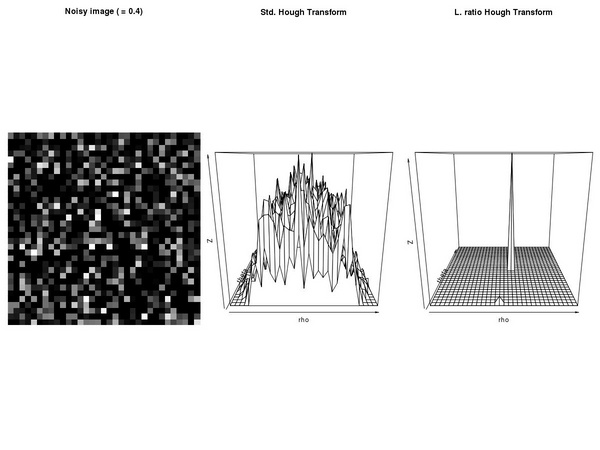Fondazione Bruno Kessler - Technologies of Vision
contains material from
Template Matching Techniques in Computer Vision: Theory and Practice
Roberto Brunelli © 2009 John Wiley & Sons, Ltd
The Hough transform is an efficient way to perform template matching when the pixel representation of the templates is at the same time sparse (only a fraction of the pixels in the image are representative) and at the same time continuous so that local directional information can be used to focus the update of the cells in accumulator space. The equivalent template in image space can be obtained by backprojecting a single cell into image space.
The detailed shape of the resulting template is not obvious even in simple cases such as line detection using the normal parametrization (see Figure 7.3).

|